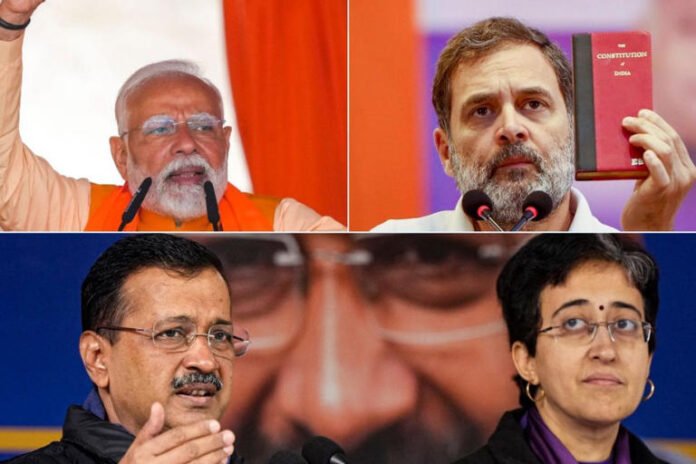As Delhi braces for the announcement of its 2025 Assembly election results on Saturday, February 8, the political landscape is poised for a potential transformation. The Bharatiya Janata Party (BJP) is striving to break its 27-year hiatus from power in the National Capital Territory, while the incumbent Aam Aadmi Party (AAP) seeks a third consecutive term.
A Brief Historical Context
The BJP last held the reins in Delhi in 1998. Since then, the political scene has been dominated by the Congress Party until 2013, after which AAP emerged as a formidable force. Under the leadership of Arvind Kejriwal, AAP secured landslide victories in both the 2015 and 2020 elections, primarily focusing on governance issues such as education, healthcare, and public utilities.
The 2025 Electoral Battle
The 2025 election has been characterized by a tripartite contest among AAP, BJP, and Congress. Voting for all 70 Assembly constituencies occurred in a single phase on February 5, with over 15 million eligible voters casting their ballots. A total of 699 candidates contested, including 603 men and 96 women.
Key Players and Campaign Narratives
- Aam Aadmi Party (AAP): Led by Chief Minister Atishi, AAP campaigned on its track record of improving public services. The party emphasized its achievements in enhancing government schools, healthcare facilities, and providing free utilities like water and electricity. Atishi described the election as a “Dharmyuddh,” underscoring the moral imperative of their governance model.
- Bharatiya Janata Party (BJP): The BJP intensified its campaign by criticizing AAP’s governance and alleging involvement in corruption cases, such as the Delhi Excise Policy controversy. The party projected a “double engine” government narrative, suggesting that aligning the state and central governments would lead to more efficient governance.
- Congress: Once a dominant force in Delhi politics, Congress aimed for a revival by focusing on grassroots issues and presenting itself as a viable alternative to both AAP and BJP. However, the party’s campaign faced challenges in regaining its erstwhile support base.
Voter Turnout and Public Sentiment
The election witnessed a voter turnout of 57.70%, reflecting the citizens’ engagement in shaping the city’s future. The relatively moderate turnout indicates a mix of enthusiasm and apathy among the electorate, with various factors influencing voter behavior.
Possible Outcomes and Implications
As the counting day approaches, several scenarios are being contemplated:
- BJP’s Resurgence: A victory for BJP would mark its return to power in Delhi after nearly three decades, potentially altering the city’s policy direction and its relationship with the central government.
- AAP’s Continuation: A third consecutive term for AAP would reinforce its governance model and could serve as a validation of its policies focused on public welfare.
- Hung Assembly: In the event of a hung assembly, where no party secures a clear majority, coalition negotiations would become pivotal. The Lieutenant Governor would play a crucial role in facilitating government formation, possibly leading to a period of political uncertainty.
Looking Ahead
The outcome of the 2025 Delhi Assembly elections will have significant implications for the city’s governance and its residents. As the votes are tallied on February 8, all eyes will be on whether the BJP can end its prolonged absence from Delhi’s power corridors or if AAP will continue its governance for another term. The political dynamics in Delhi are set for a potential shift, with the election results poised to influence the city’s trajectory in the coming years.

